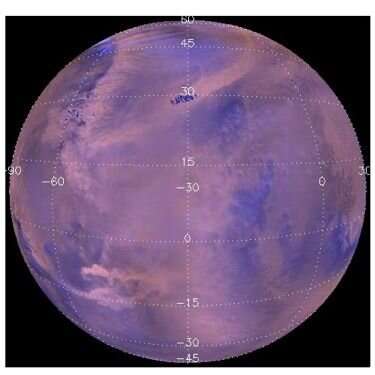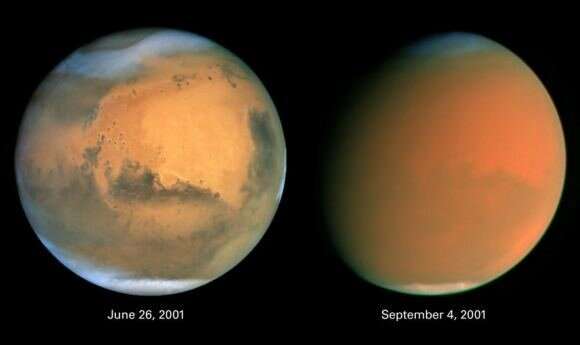A combined map of almost 15,000 dust storms on Mars

Data in the world of astronomy is spread out in so many different places. There are archives for instruments on individual spacecraft and telescopes. Sometimes all that is needed to get new insight out of old data is to collect it all together and analyze a whole set rather than isolated instances. That is exactly what happened recently when a team from the Harvard Center for Astrophysics collected and analyzed data about almost 15,000 dust storms that have taken place on Mars over the last eight Martian years.
The data used to build the combined database was collected by the Mars Global Surveyor, and Mars Reconnaissance Orbiter, which both take daily images of the whole Martian surface. The database they developed, known as the Mars Dust Activity Database (MDAD) provided a variety of insights into some characteristics of the dust storms that occur so regularly on the red planet.
For a dust storm to qualify to be in the database, it must cover more than 100,000 square kilometers of land, and had to be visible for more than one Martian day. Most of the 15,000 instances were one-off isolated events. However, the team also took the time to define the more cohesive dust storm activity that they noticed in several storms.
One type of larger event is defined as a "dust storm sequence," in which a collection of storm "members" travel in roughly the same direction over the surface more than three Martian days. The team found 228 instances of these events and noted that they could be grouped into three different categories, depending on the size and number of its component smaller dust storms.
If enough of those smaller dust storms combine, they have the potential to impact the overall Martian climate. The researchers deemed these types of major sequences as those covering more than 10 million kilometers. Many of these major storms had a significant build up of dust storm activity for days beforehand, with activity increasing steadily over the course of a week. There were 43 of these major events found in the data, and they were the cause of many of the changes observed in the Mars atmosphere.

Perhaps the most important outcome from all this work is the creation of the MDAD database itself, which will allow other researchers to access the newly collected data set and draw new and novel conclusions. It goes to show that sometimes all that is required to make a new discovery is to look at the data in a new way.
Provided by Universe Today




















